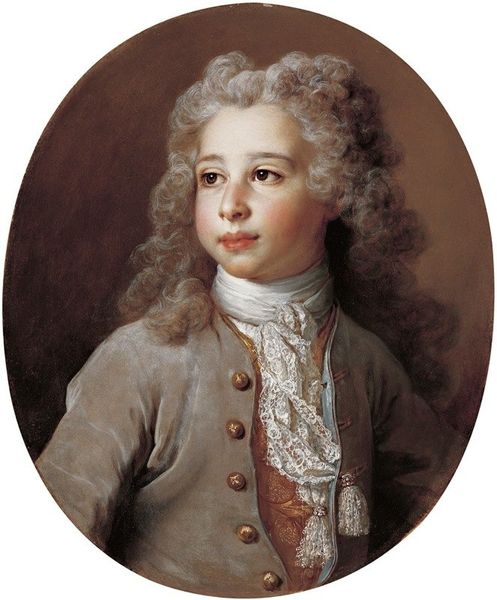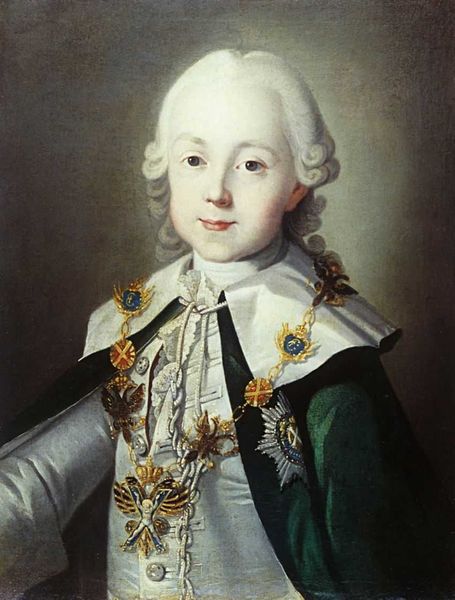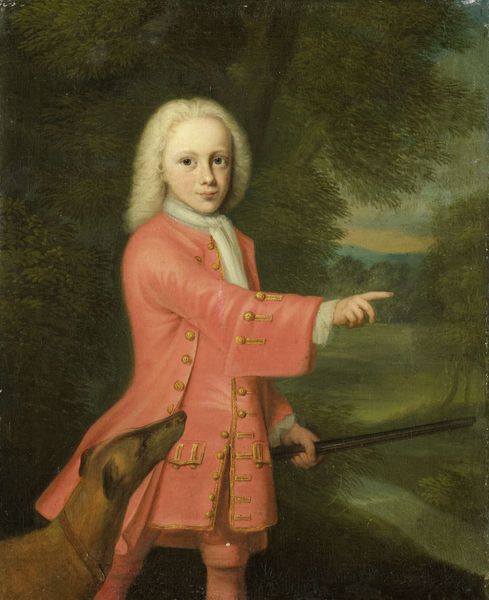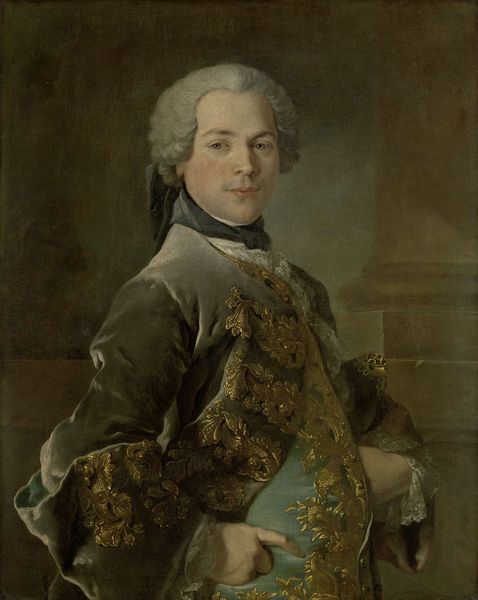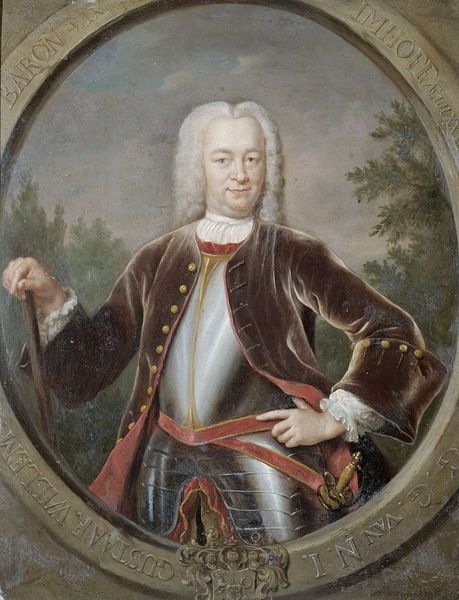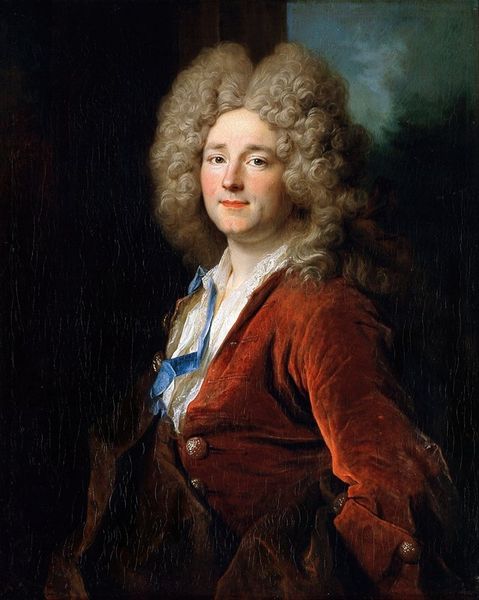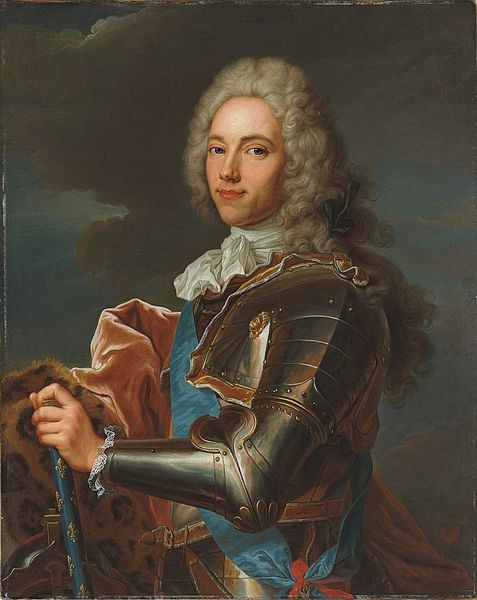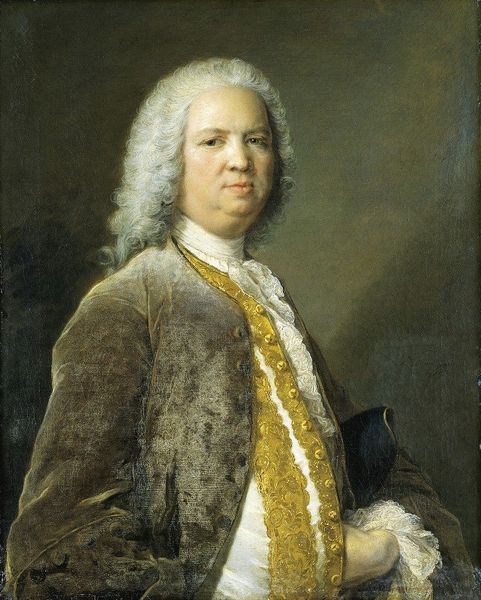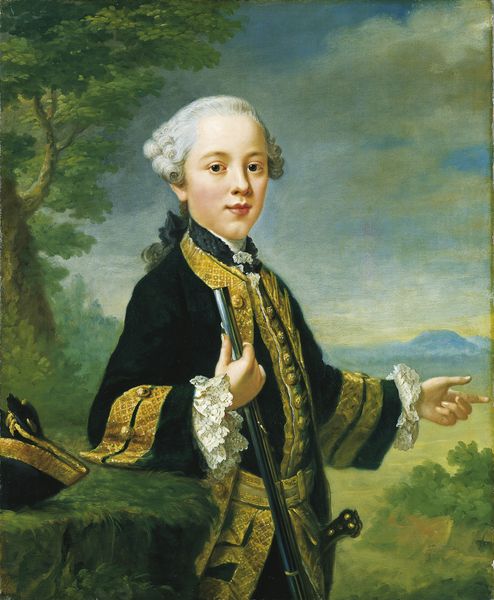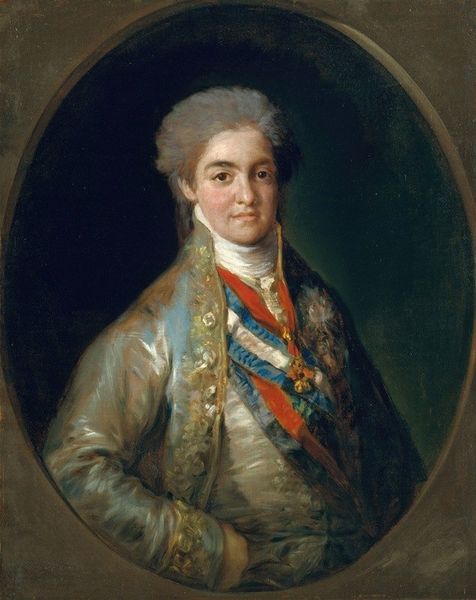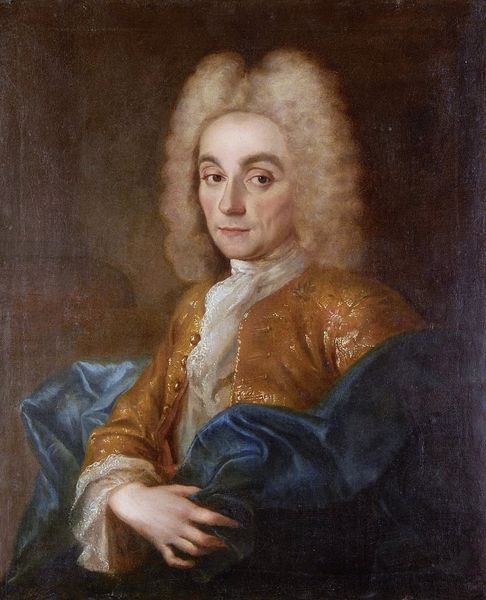
painting, oil-paint
#
portrait
#
figurative
#
baroque
#
painting
#
oil-paint
#
academic-art
Copyright: Public Domain: Artvee
Nicolas de Largillière painted this portrait of a wig-wearing young man, and it speaks volumes about the social codes of the time. Painted in France, probably in the late 17th or early 18th century, the portrait reflects the rigid class structure of the French court. The elaborate wig, the expensive velvet coat, and the lace cuffs weren't just fashion statements; they were visual markers of status. Only the wealthy could afford such luxuries. Largillière was known for his ability to capture the textures and details of clothing, showcasing the opulence of his subjects and, by extension, their social standing. The portrait also provides insights into the art institutions of the time. Artists like Largillière relied on commissions from the aristocracy. To fully understand this painting, we might consult period fashion guides, aristocratic household inventories, and artists' biographies to understand the complex interplay of art, wealth, and power in the French court. The meaning of art is contingent on social and institutional context.
Comments
No comments
Be the first to comment and join the conversation on the ultimate creative platform.
